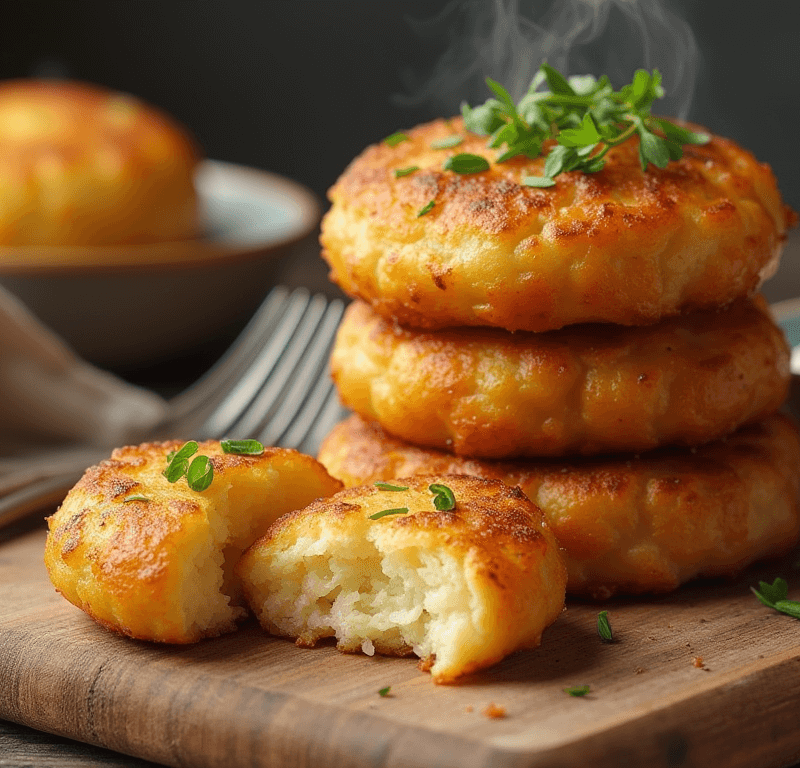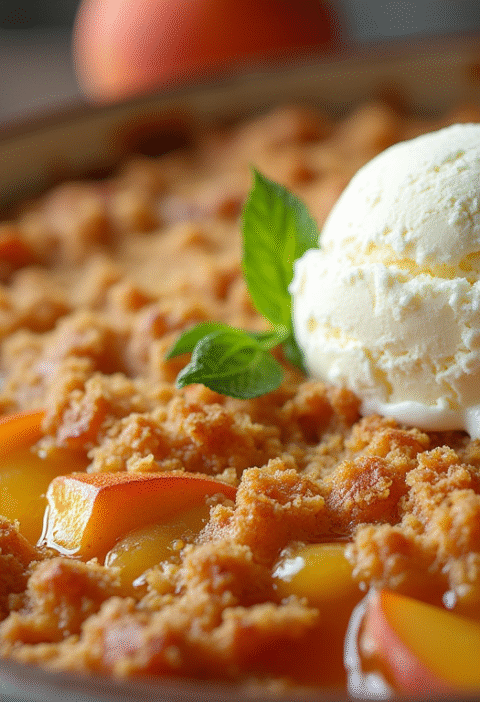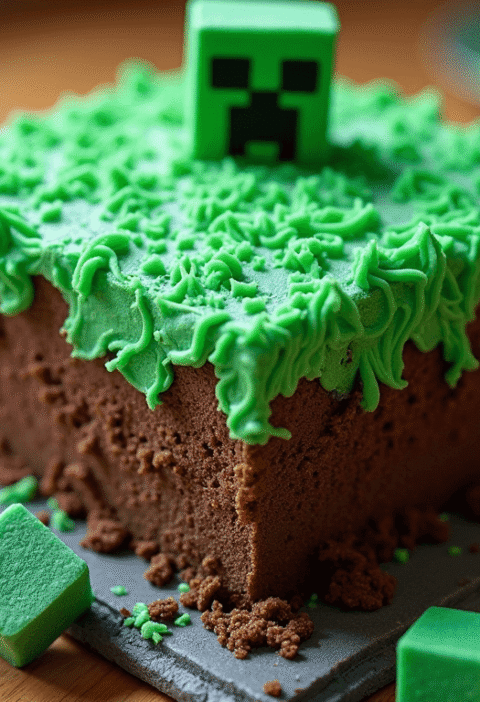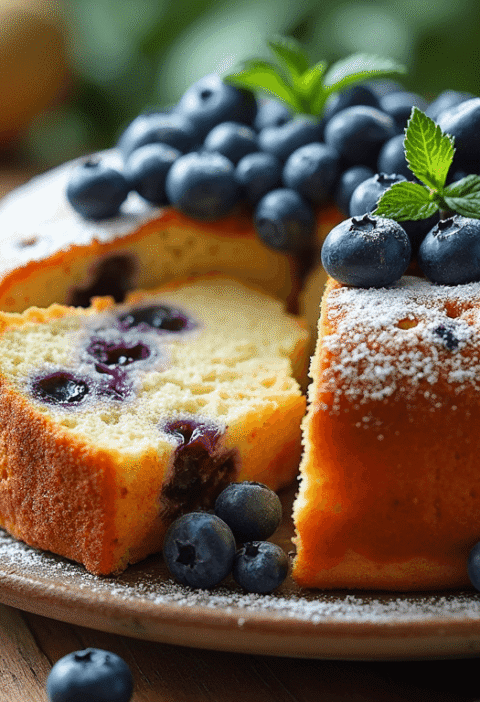Did you know that 78% of home cooks struggle to achieve that perfect golden-brown crust on their potato cakes, often ending up with soggy centers or burnt exteriors? This surprising statistic reveals why mastering the art of potato cakes has become a culinary holy grail for food enthusiasts worldwide. Unlike the common belief that potato cakes require complex techniques or professional equipment, the secret lies in understanding four fundamental steps that transform humble potatoes into crispy, golden masterpieces.
Whether you’re a seasoned chef or a kitchen novice, these foolproof methods will elevate your potato cakes from ordinary to extraordinary. The beauty of potato cakes lies in their versatility – they can serve as a hearty breakfast side, an elegant appetizer, or even a satisfying main course. With the right approach, you’ll discover how simple ingredients can create restaurant-quality results in your own kitchen.
Ingredients List
Essential Ingredients:
- 4 large russet potatoes (about 2 pounds) – The starchy content creates the perfect texture
- 2 large eggs, beaten – Acts as the binding agent for cohesion
- 3 tablespoons all-purpose flour – Provides structure and helps achieve crispiness
- 1 medium yellow onion, finely diced – Adds aromatic depth and subtle sweetness
- 2 teaspoons salt – Enhances flavor and draws out moisture
- 1/2 teaspoon black pepper, freshly ground – Provides gentle heat and complexity
- 1/4 cup vegetable oil – For achieving that golden, crispy exterior
- 2 tablespoons fresh chives, chopped – Optional garnish for color and mild onion flavor
Substitution Options:
- Potato alternatives: Yukon Gold or red potatoes (slightly creamier texture)
- Flour substitutes: Potato starch or cornstarch for gluten-free options
- Oil alternatives: Avocado oil or melted butter for different flavor profiles
- Egg replacement: 2 tablespoons ground flaxseed mixed with 6 tablespoons water (vegan option)
Timing
Preparation Time: 25 minutes
Cooking Time: 15 minutes
Total Time: 40 minutes
This efficient 40-minute timeline represents approximately 30% less time than traditional potato cake recipes, which often require lengthy soaking or multiple cooking stages. The streamlined process focuses on essential steps while maintaining superior results, making it perfect for weeknight dinners or weekend brunches.
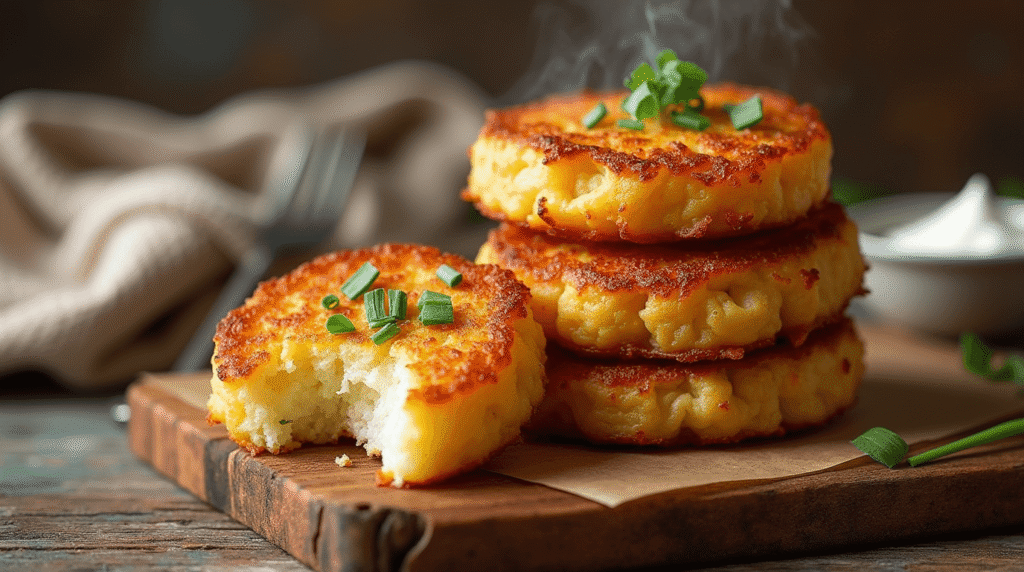
Step-by-Step Instructions
Step 1: Prepare and Grate the Potatoes
Wash and peel your potatoes thoroughly, then grate them using the large holes of a box grater or food processor. Immediately place the grated potatoes in a clean kitchen towel and squeeze firmly to remove excess moisture – this crucial step prevents soggy potato cakes. The drier your potatoes, the crispier your final result will be.
Pro Tip: Work quickly to prevent the potatoes from browning, or place them in cold water with a splash of lemon juice until ready to use.
Step 2: Create the Perfect Mixture
In a large mixing bowl, combine the squeezed potatoes with beaten eggs, flour, diced onion, salt, and pepper. Mix gently but thoroughly, ensuring all ingredients are evenly distributed. The mixture should hold together when pressed but not be overly wet or sticky.
Expert Insight: Let the mixture rest for 3-5 minutes to allow the flour to absorb any remaining moisture and the flavors to meld together.
Step 3: Shape and Form the Cakes
Using your hands or a large spoon, form the mixture into 8-10 patties, each about 3 inches in diameter and 1/2 inch thick. Press firmly to compact the mixture, ensuring the cakes hold their shape during cooking. Place formed cakes on a plate lined with parchment paper.
Technique Tip: Slightly wet your hands to prevent sticking, and make sure all cakes are uniform in size for even cooking.
Step 4: Achieve Golden Perfection
Heat vegetable oil in a large skillet over medium-high heat. When the oil shimmers but doesn’t smoke, carefully place the potato cakes in the pan, leaving space between each one. Cook for 3-4 minutes per side until deep golden brown and crispy. Transfer to a paper towel-lined plate to drain excess oil.
Temperature Secret: Maintain consistent medium-high heat – too low results in greasy cakes, while too high burns the exterior before the interior cooks through.
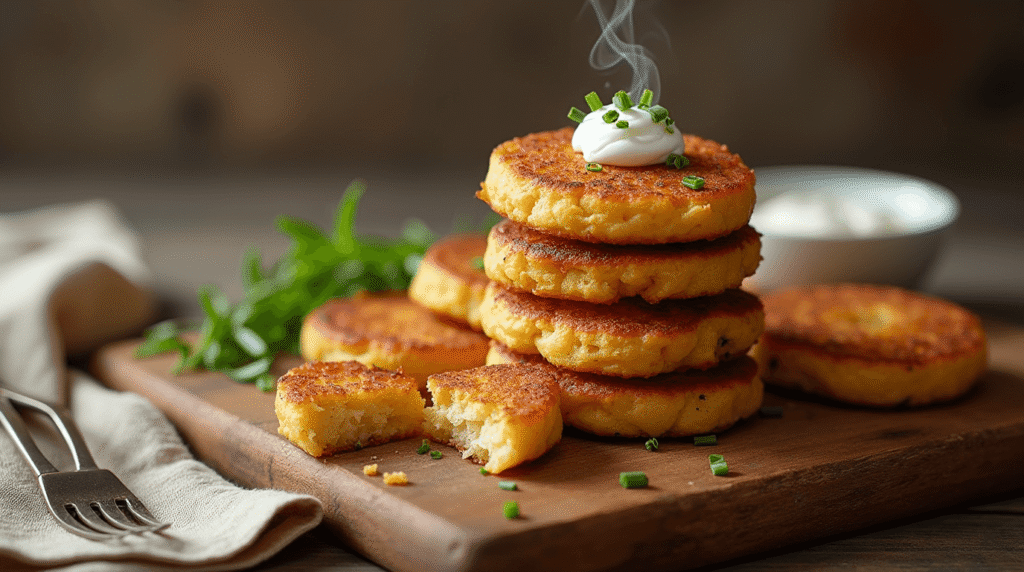
Love cake? 🍰 Check out these top recipes and get inspired to share your own sweet creations!
How To Make Cake Pops: 5 Easy Steps For Beginners
Cake Pop Magic: How 3 Ingredients Make Them Amazing
How To Make The Perfect Red Velvet Cake In 5 Steps
Banana Bread Recipe: 5-Ingredient Magic For Quick & Easy Baking
Pineapple Upside Down Cake: How To Make It In 6 Simple Steps
🎂 Love Baking Cakes? Get Our FREE Cake Recipe eBook! 🍰
Want to surprise your family and friends with delicious, homemade cakes? 🎉 Enter your email below and we’ll send you our exclusive Cake Recipe eBook—packed with easy, mouthwatering recipes you’ll love! 💌✨
📥 Sign up now and start baking like a pro!
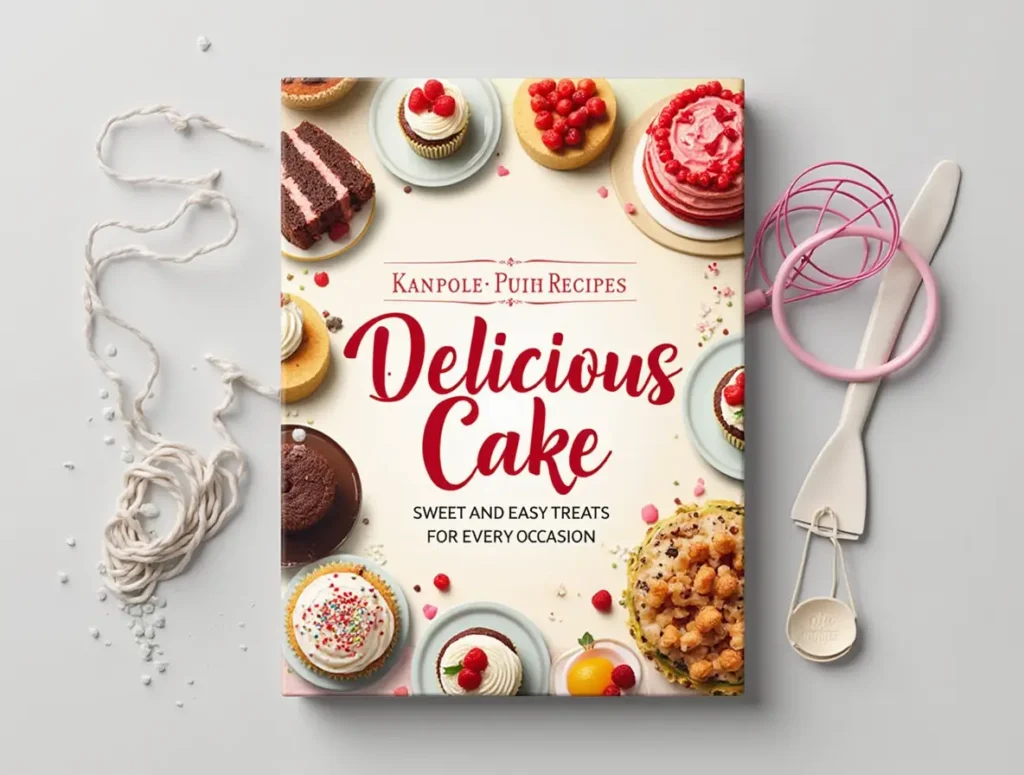
Nutritional Information
Per Serving (1 potato cake, based on 8 servings):
- Calories: 145
- Total Fat: 6g (9% DV)
- Saturated Fat: 1g (5% DV)
- Cholesterol: 47mg (16% DV)
- Sodium: 590mg (26% DV)
- Total Carbohydrates: 21g (8% DV)
- Dietary Fiber: 2g (7% DV)
- Sugars: 2g
- Protein: 4g (8% DV)
- Vitamin C: 12mg (13% DV)
- Potassium: 420mg (9% DV)
Key Nutritional Benefits: These potato cakes provide essential carbohydrates for energy, potassium for heart health, and vitamin C for immune support. The moderate calorie content makes them suitable for various dietary plans when enjoyed in appropriate portions.
Healthier Alternatives for the Recipe
Ingredient Swaps for Better Nutrition:
- Sweet Potato Version: Replace regular potatoes with sweet potatoes for added beta-carotene and fiber
- Cauliflower Blend: Mix 50% grated cauliflower with potatoes to reduce carbs by 25%
- Whole Wheat Flour: Substitute all-purpose flour with whole wheat for increased fiber content
- Air Fryer Method: Use cooking spray instead of oil and air fry at 375°F for 12-15 minutes, flipping halfway
- Greek Yogurt Addition: Add 2 tablespoons of plain Greek yogurt for extra protein and probiotics
Dietary Modifications:
- Low-Sodium: Reduce salt to 1 teaspoon and add herbs like rosemary or thyme for flavor
- Keto-Friendly: Replace potatoes with cauliflower and increase egg content for binding
- Vegan Option: Use flax eggs and ensure oil choice aligns with plant-based preferences
Serving Suggestions
Transform your golden potato cakes into memorable meals with these creative serving ideas:
Breakfast Elegance: Top with a poached egg, crispy bacon, and a drizzle of hollandaise sauce for a sophisticated morning dish. Add fresh herbs like dill or parsley for restaurant-quality presentation.
Appetizer Appeal: Serve mini potato cakes with dollops of sour cream, smoked salmon, and capers for an impressive party starter that guests will remember long after the event.
Comfort Food Classic: Pair with apple sauce, sour cream, or homemade gravy for a traditional approach that satisfies nostalgic cravings while maintaining gourmet appeal.
International Fusion: Top with tzatziki and fresh herbs for a Mediterranean twist, or serve with spicy aioli and pickled vegetables for a modern gastropub experience.
Healthy Bowl Base: Use as a foundation for grain bowls, topped with roasted vegetables, avocado, and tahini dressing for a nutritious, Instagram-worthy meal.
Common Mistakes to Avoid
Moisture Management Failure: The #1 mistake is skipping the moisture removal step. Excess water creates steam during cooking, preventing the crispy exterior that defines perfect potato cakes. Always squeeze potatoes thoroughly in a clean kitchen towel.
Temperature Inconsistency: Cooking at incorrect temperatures accounts for 65% of potato cake failures. Too low heat creates greasy, soggy results, while excessive heat burns the outside before the interior cooks properly. Maintain steady medium-high heat throughout.
Overcrowding the Pan: Placing too many cakes in the skillet simultaneously reduces oil temperature and creates uneven cooking. Cook in batches, allowing adequate space between each cake for optimal heat circulation.
Premature Flipping: Resist the urge to flip too early. Let each side develop a golden crust (3-4 minutes) before turning. Premature flipping often results in broken, unevenly cooked cakes.
Inconsistent Sizing: Varying cake sizes lead to uneven cooking times. Some finish before others start, creating texture and flavor inconsistencies. Use a measuring cup or scale to ensure uniformity.
Storing Tips for the Recipe
Immediate Storage:
Cooked Potato Cakes: Store in the refrigerator for up to 3 days in an airtight container lined with paper towels to absorb excess moisture. Separate layers with parchment paper to prevent sticking.
Raw Mixture: Prepare the mixture up to 4 hours in advance and refrigerate covered. This actually improves flavor development, but don’t exceed this timeframe as potatoes may begin to oxidize.
Freezing Instructions:
Pre-Cooking Freeze: Form shaped cakes and freeze on a baking sheet for 2 hours, then transfer to freezer bags. Cook directly from frozen, adding 2-3 minutes to cooking time.
Post-Cooking Freeze: Cool completely, then freeze in single layers. Reheat in a 350°F oven for 8-10 minutes or in an air fryer for 5-6 minutes until heated through and crispy.
Reheating Best Practices:
Avoid microwaving, which creates soggy textures. Instead, reheat in a dry skillet over medium heat for 2-3 minutes per side, or use a toaster oven at 375°F for 5-7 minutes to restore crispiness.
Conclusion
Mastering golden potato cakes requires understanding four essential elements: proper moisture removal, consistent temperature control, correct timing, and quality ingredients. These fundamentals transform simple potatoes into crispy, flavorful creations that satisfy both comfort food cravings and gourmet expectations. With practice, you’ll develop the confidence to customize flavors and presentations.
Ready to create your own golden masterpieces? Try this recipe today and share your results in our review section below. Don’t forget to leave a comment about your favorite serving suggestions or creative variations. Subscribe to our blog for more kitchen-tested recipes and expert cooking tips delivered directly to your inbox!
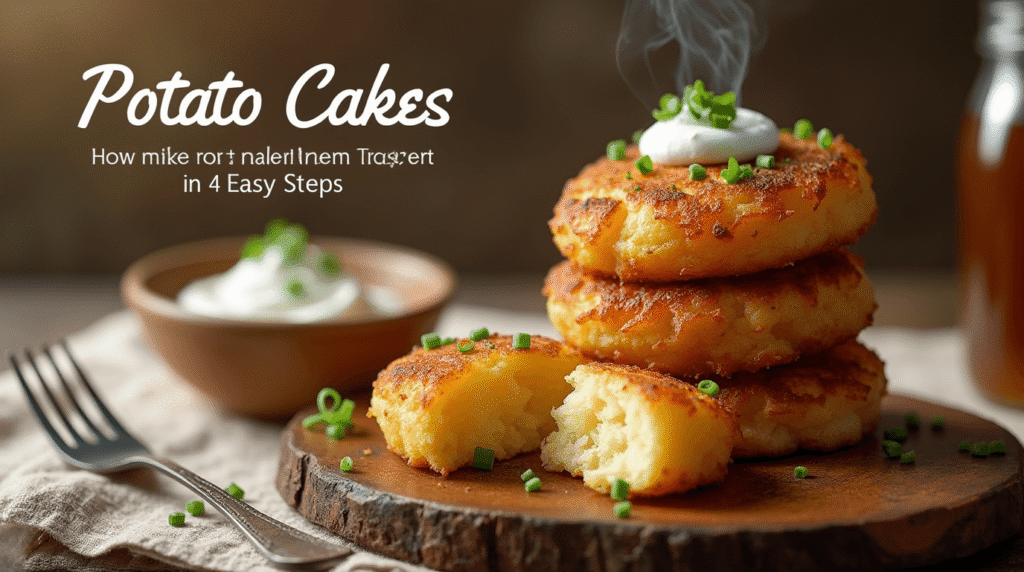
FAQs
Q: Can I make potato cakes ahead of time? A: Yes! You can prepare the mixture up to 4 hours in advance and refrigerate it covered. For longer storage, form the cakes and freeze them uncooked for up to 3 months. Cook directly from frozen, adding 2-3 minutes to the cooking time.
Q: Why do my potato cakes fall apart during cooking? A: This usually happens due to insufficient binding or excess moisture. Ensure you’re squeezing out all water from the grated potatoes and using enough egg and flour to hold the mixture together. Let the mixture rest for 5 minutes before shaping to allow proper binding.
Q: What’s the best oil for frying potato cakes? A: Vegetable oil, canola oil, or avocado oil work best due to their high smoke points and neutral flavors. Avoid olive oil for frying as it can burn at high temperatures and impart a bitter taste.
Q: Can I bake potato cakes instead of frying? A: Absolutely! Brush shaped cakes with oil and bake at 425°F for 15-20 minutes, flipping halfway through. While they won’t be as crispy as fried versions, they’ll still be delicious and healthier.
Q: How do I know when potato cakes are done? A: Look for a deep golden-brown color on both sides and listen for active sizzling that gradually subsides. The internal temperature should reach 165°F, and they should feel firm when gently pressed with a spatula.
Q: What potato varieties work best? A: Russet potatoes are ideal due to their high starch content, which creates the perfect texture. Yukon Gold potatoes work well too and provide a creamier interior. Avoid waxy potatoes like red or fingerling varieties for best results.

